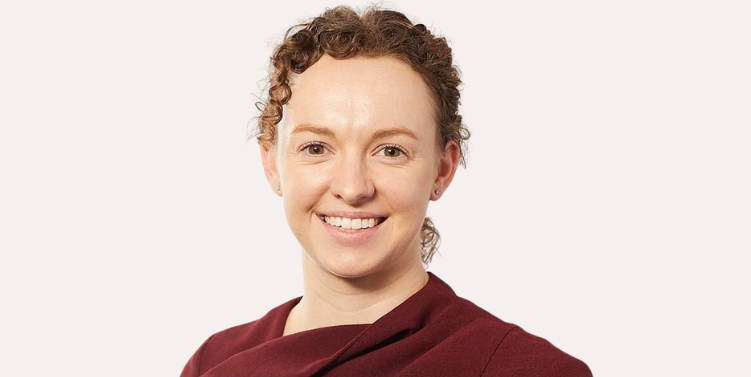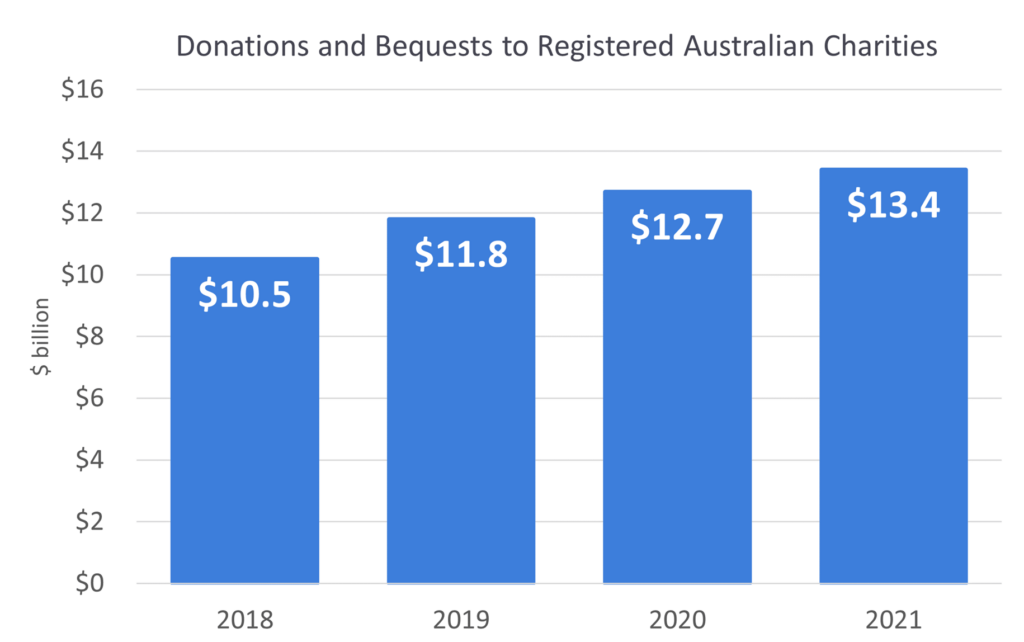
ACNC Commissioner Sue Woodward delivered her first Australian Charities Report since stepping into the role coinciding with the 10th year of the Charity Commission. Rebecca Moriarty, Project Manager in Philanthropy Australia’s Policy, Government Relations and Research team, takes a look at the key points and how the rate of philanthropic growth needs to improve to achieve our double giving agenda.
Focus on giving and philanthropy
The Commission made a timely inclusion of giving and philanthropy statistics, given the national conversation around the Productivity Commission Inquiry into Philanthropy.
As at 8 February 2023, 19% of the 59, 967 registered charities were grantmakers. Grantmakers comprise of three broad types of structured philanthropy and one category of ‘other grantmakers’:
- Private Ancillary Funds (PAFs)
- Public Ancillary Funds (PuAFs)
- Other types of charitable trusts
- ‘Other grantmakers’ referring to charities that report more than 70% of their total expenses as grant or donation expenses or classify a program as grantmaking.

Philanthropy Australia provides information resources on structured philanthropy for the general and professional adviser audience freely available from the website:
- Professional Adviser Guide to Giving 2023 (with CPD accreditation certificate available).
- Structured Giving in Australia
- Philanthropy Australia’s Guide to Giving
The 11,427 grantmakers identified – and the 10,165 that submitted their Annual Information Statement to the ACNC – exist around Australia operating at different scales of philanthropy with total net assets of approximately $51 billion. Some have been operating for decades with large corpuses (asset base from which they make charitable distributions) in the tens of millions or hundreds of millions of dollars, while many ancillary funds have been established since the introduction of the Taxation Laws Amendment Act in 2000.
As at 8 February 2023, the ACNC reports 2,035 PAFs – which typically comprise of wealthy individuals or family foundations, usually with a least $1 million in assets – and 1,172 PuAFs, which are public funds that can receive donations from the public, including some community foundations.
More than 73% of grantmaking charities’ total spending on grants and donations was for use in Australia with the remainder for use outside Australia. Spending on grants for use in Australia was significantly higher for charities categorised as structured philanthropy (90.6%) than it was for charities categorised as other grantmakers (61.8%).
The average grant size made from PAFs for use in Australia was $430,672 and $443,394 for PuAFs. The average grant size across all structured philanthropy for use in Australia was $267,207, totalling around $2 billion. Another $203 million in grants were distributed outside Australia. Adding on the ‘other grantmakers’ spend, the total grants and donations made for use in Australia from all grantmakers was $4 billion, and another $1.5 billion for use outside Australia.
Philanthropy growth rate needs to increase
Grants and distributions by charities for use within Australia was measured by the ACNC as having increased 5% to $9.7 billion in 2021. It was reported in the Australian Financial Review that this figure is insufficient to hit the federal government’s goal to double all giving by 2030.
Philanthropy Australia’s CEO Jack Heath said: “It’s good to see that giving has increased by 5%, but we need to lift our game if we are to double giving by 2030.
“We need to grow by at least 8% per annum going forward.”
Jack said the Productivity Commission’s philanthropy inquiry would be important in reaching the goal, and in particular Philanthropy Australia’s recommendation to make it easier for people to bequeath money from super after death.
“At present, legislation forbids people using what’s termed a ‘binding death nomination’ to give a proportion of any unspent superannuation to charity.” Jack said that changing this would be the most powerful lever we have to lift giving.
“It is highly cost-effective as it does not attract a tax deduction. This is not about dipping into your super while you’re alive, this is about giving people the choice and the ability to say, ‘When I’m gone, I’d like to direct 10% or 20% to a charity’,” he said.
Charity sector revenue increased more than expenses for the first time
The total revenue for registered charities across Australia increased to $190 billion in 2021, an annual increase of $14 billion, or 7.9%. Total expenses also increased by $7.1 billion to $175 billion, equivalent to 4.2%. Not only was the growth in revenue greater than expenses, it also exceeded the general Australian economy, which grew by 3.6% in the 2021–22 financial year.
However, the revenue increases were not experienced evenly across different-sized charities. Only medium, very large and extra large charities reported an increase in total revenue. Extra large charities, which make up 0.5% of Australia’s charity sector, accounted for more than 50% of the sector’s aggregate revenue. Extra small charities, despite making up approximately one-third of the sector, contributed 0.1% of the aggregate revenue.
Donations and bequests increased but by less than the year before
Donations and bequests increased to $13.4 billion, up from $12.7 billion in 2020, or around 5.3% which is lower than the previous reporting period where there was an 8% annual increase.

Extra large charities have experienced a relatively large growth in donations and bequests over the last three years at 104.9%, compared to large and medium-sized charities at 15.6% and 10.7% respectively. Very large, small and extra small charities experienced the lowest rates of growth during the last three years at 7.3%, 6.6% and 1.1%, respectively.
Donations and bequests remain a relatively small proportion of the charity sector’s overall revenue at 7%.
The proportion of revenue derived from government was around 51.2%, followed by 31.2% from the sales of goods and services, and a combined 10.6% from investments and other revenue.
The full report is available to download.